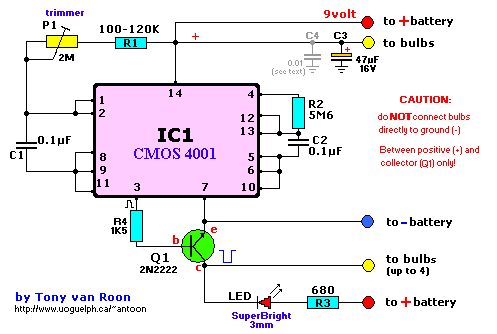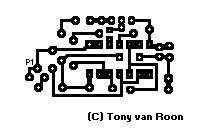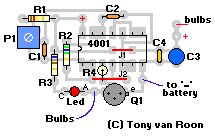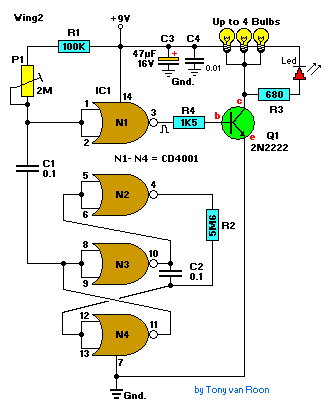R1 = 100K-120K
R2 = 5M6 (5.6 M)
R3 = 680 Ohm
R4 = 1K5
P1 = 2 Meg, trimmer potentiometer (multi-turn works best)
J1,J2 = Jumper
C1,C2 = 0.1 uF, ceramic (100 nanoFarad)
C3 = 47uF, 16V, electrolytic
C4 = 0.01 (decoupling) ceramic, *optional*, may not be required
LED = Red, 'Ultra Bright'.
Q1 = PN100, 2N2222(A), or any other equivalent NPN transistor
IC1 = CD4001B, CD4011, CD4093, MC14001,or equivalent CMOS
BULB = Miniature high brightness light bulb, 5v/15ma or Super-Bright LED's.
Substitute with 2volt bulbs (Electro-Sonic #1784) if power source is
less than 6 volt. The larger the current of the bulb (e.i. larger
than 5v/15mA) the less bright it will flash!
A KIT for this project is available: 



